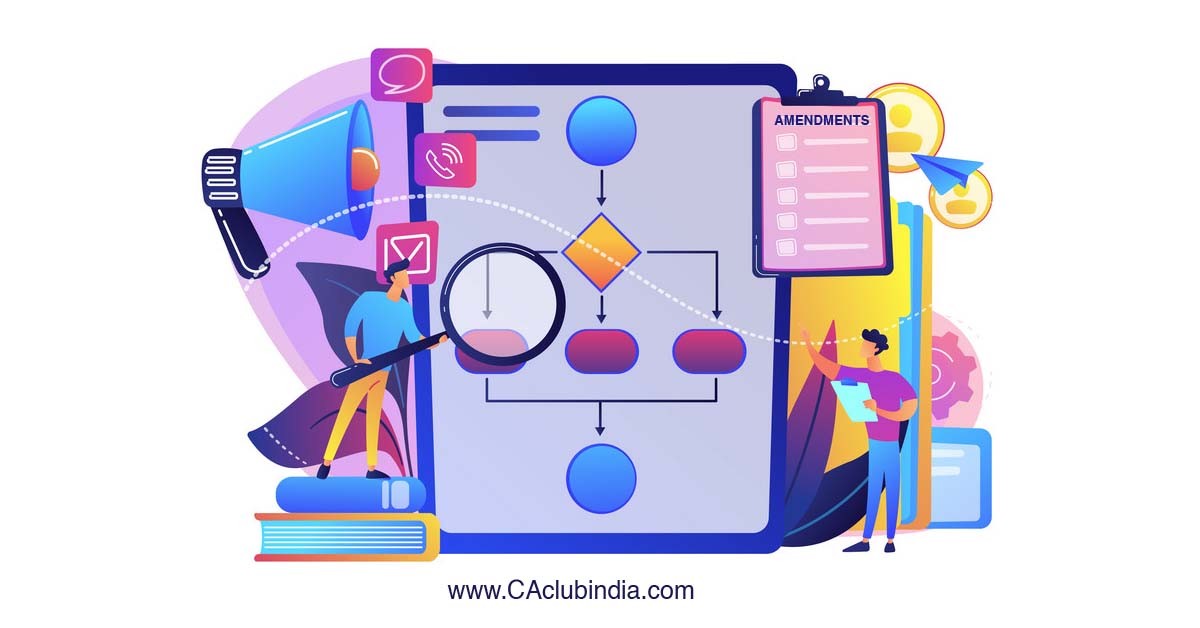CBDT amends Income-tax Rules, 1962 to ease authentication of electronic records submitted in faceless assessment proceedings
In order to provide big relief, Income-tax Rules were amended for authentication under faceless assessment. The Central Board of Direct Taxes (CBDT) has amended Income-tax Rules, 1962 to make authentication of electronic records under the faceless assessment procedure easy.
The amended Rules mandate that electronic records submitted through the registered account of the taxpayers in the Income Tax Department’s portal shall be deemed to have been authenticated by the taxpayer by electronic verification code (EVC).
As per the amendment, all a person needs to do now to get their electronic record authenticated is to submit an electronic record by logging into their registered account in the designated portal of the Income-Tax Department.
However, existing provisions of section 144B(7)(i)(b) currently do not provide this simplified process of authentication by EVC to certain entities, including companies, tax audit cases, etc, the ministry clarified. They are mandatorily required to authenticate the electronic records by digital signature. Faceless assessment was introduced in the Union Budget 2019 to eliminate the interaction between the assessment officer and assessee during tax assessment.

Press Information Released by the Ministry
For easing the process of authentication of electronic records in faceless assessment proceedings, the Government has amended Income-tax Rules, 1962 (‘the Rules’) vide notification no G.S.R. 616(E) dated 6th September, 2021. The amended Rules provides that electronic records submitted through registered account of the taxpayers in the Income-tax Department’s portal shall be deemed to have been authenticated by the taxpayer by electronic verification code (EVC). Therefore, where a person submits an electronic record by logging into his registered account in designated portal of the Income-tax Department, it shall be deemed that the electronic record has been authenticated by EVC for the purposes of section 144B(7)(i)(b) of the Income-tax Act, 1961 (‘the Act’).
However, under the existing provisions of section 144B(7)(i)(b) of the Act, this simplified process of authentication by EVC is not available to certain persons (such as companies, tax audit cases, etc.) and they are mandatorily required to authenticate the electronic records by digital signature. In order to provide the benefit of the simplified process of authentication by EVC to these persons, it has been decided to extend the simplified process of authentication by EVC to these persons also. Hence, the persons who are mandatorily required to authenticate electronic records by digital signature shall be deemed to have authenticated the electronic records when they submit the record through their registered account in the Income-tax Department’s portal. Legislative amendments in this regard shall be proposed in due course.
Note:
- Legislative amendments in this regard shall be proposed in due course by the ministry.
- This facility has not been made available for companies, tax audit cases among others, who will need to authenticate their electronic records with a digital signature.
Disclaimer: Every effort has been made to avoid errors or omissions in this material. In spite of this, errors may creep in. Any mistake, error or discrepancy noted may be brought to our notice which shall be taken care of in the next edition. In no event the author shall be liable for any direct, indirect, special or incidental damage resulting from or arising out of or in connection with the use of this information.








 CAclubindia
CAclubindia

